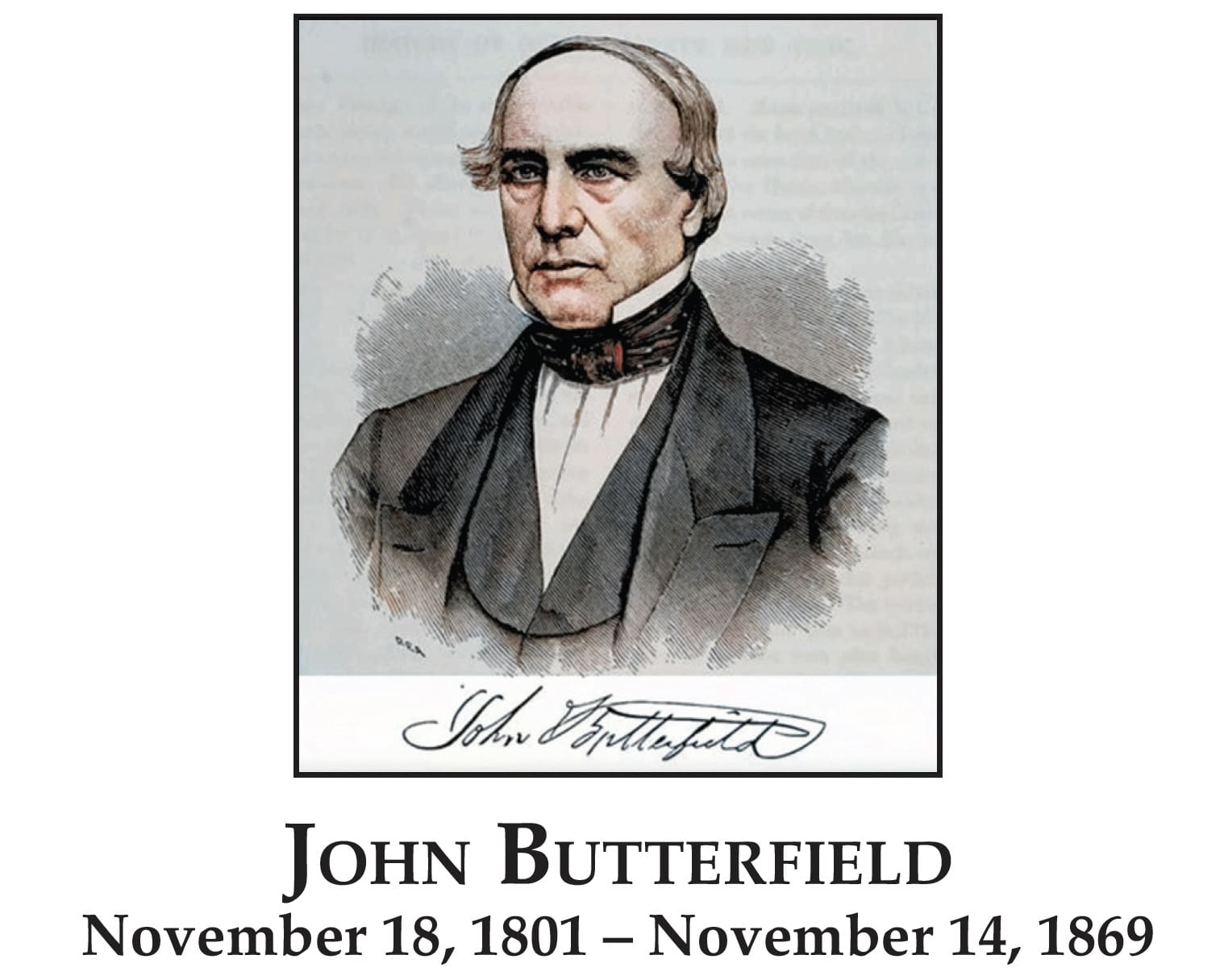Trail History
The discovery of gold in California sparked westward migration. Gold, silver, and free land were all appealing incentives. Prior to the discovery of gold, there was little demand for fast mail and safe passenger service from the east to the west. Only two scheduled steamships delivered mail monthly, and this form of transportation was slow and often plagued by storms, tropical diseases and seasickness. With increased population, the need for an east to west service became stronger.
California was admitted as a state in 1850 and the people of California demanded a better that Congress get a transcontinental railroad built to the state and a method of mail and passenger service better than they had. Congress battled over the proposal for six years because they could not agree on the best route to get to California. Finally, they threatened to secede if communications and overland travel were not improved. California’s main request was that mail service be improved while they waited for the railroad.
Congress finally passed a bill on March 3, 1857, that authorized Postmaster General Aaron Brown (former governor of Tennessee) to solicit bids and award a contract for a cross-country mail service. Nine bids were received in June 1857. Brown insisted that the route must begin in Memphis and St. Louis, serve Little Rock, then proceed to San Francisco via El Paso and Ft. Yuma.
The discovery of gold in California sparked westward migration. Gold, silver, and free land were all appealing incentives. Prior to the discovery of gold, there was little demand for fast mail and safe passenger service from the east to the west. Only two scheduled steamships delivered mail monthly, and this form of transportation was slow and often plagued by storms, tropical diseases and seasickness. With increased population, the need for an east to west service became stronger.
California was admitted as a state in 1850 and the people of California demanded a better that Congress get a transcontinental railroad built to the state and a method of mail and passenger service better than they had. Congress battled over the proposal for six years because they could not agree on the best route to get to California. Finally, they threatened to secede if communications and overland travel were not improved. California’s main request was that mail service be improved while they waited for the railroad.
Congress finally passed a bill on March 3, 1857, that authorized Postmaster General Aaron Brown (former governor of Tennessee) to solicit bids and award a contract for a cross-country mail service. Nine bids were received in June 1857. Brown insisted that the route must begin in Memphis and St. Louis, serve Little Rock, then proceed to San Francisco via El Paso and Ft. Yuma.
As a result, the Butterfield Overland Mail Company was organized in 1857. Butterfield had the ability and the capital to move swiftly after receiving the contract. John Butterfield was an accomplished livery man and had the position to encourage investors to make the route possible.
John Butterfield, Jr. and Amos Stafford were dispatched by John Butterfield to San Francisco California in September, 1957 to work their way back to St. Louis determine a route. The route would be an ox-bow route which could be open through all seasons. He sent out representatives to find and employ guides, scouts, and frontiersmen who were friendly with Indian tribes and who knew every spring, water hole, stream and mountain passes on the entire route. They had to have a supply of hay, grain, food firewood, and water stored at each station. The stations would provide sleeping and eating accommodations for passengers and drivers. They needed blacksmith and harness shops and emergency horses and mules.
Collecting the supplies was a big job. During the year of preparation, Butterfield drove his men relentless and spent more than a million dollars to get the mail route ready to go into operation. In September,1858, all pieces were in place including:
141 Stage Stations
Concord Coaches and Celerity Coaches
500 vehicles including freight wagons to carry hay, grain, and provisions for each way station, and tank wagons for hauling water
Horses and Mules
1200 skilled superintendents, road bosses,, drivers, guards, conductors, blacksmiths, harness makers, Hostelers and Clerks
Butterfield chose St. Louis as his eastern terminal but when the mail route was ready to go into operation, the railroad line had already reached Tipton (60 miles). He decided to carry the mail himself on the first leg of the initial trip. Early on September 16, 1858, John Butterfield left the St. Louis Post Office with 2 bags of mail and went to the railroad by wagon.
At Tipton, 12 hours later (6 pm), John Butterfield Jr. waited in a Concord stagecoach pulled by 4 horses. It took 9 minutes to transfer mail and passengers Including Judge and Mrs. John Wheeler and their 2 children from Ft. Smith, J. R. Corbin from the postal service in Washington D. C., and Waterman Ormsby, a correspondent for the New York Herald , Mr. and Mrs. John Butterfield.
The Overland Mail made two trips a week for 2 1/2 years leaving Tipton and San Francisco carrying passengers and up to 12,000 letters. The western fare was $200 with most stages arriving at their destination 22 days later.

